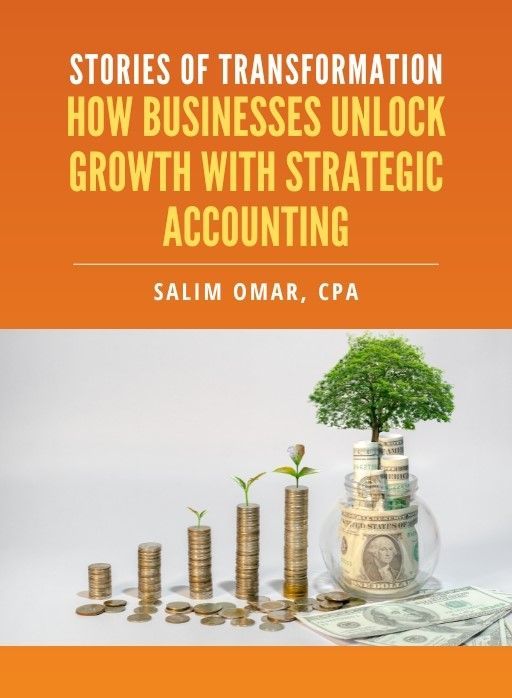The Hidden Tax Costs of Business Loans and Financing

Business Loans: More Than Just Capital
Securing a loan can feel like a win—more cash on hand, smoother operations, and maybe even that long-awaited equipment upgrade. But what often gets buried in the excitement (and paperwork) is the tax ripple effect that comes along with borrowing. Straight Talk CPAs helps business owners navigate this maze every day. And one thing’s for sure—how a loan is structured and managed can mean the difference between a smart deduction and an IRS headache.
Before we get into the weeds, let’s drop a few key terms upfront for those SEO fans out there: business loan tax implications, interest deduction,
tax write-offs, loan structuring, and financing tax strategy. Yep, these matter—and they all play a part in how your business financing decisions affect your bottom line.
The Interest Deduction: A Common Misconception
You’ve probably heard that interest on business loans is tax-deductible. And yes, it can be—but there are strings attached.
What Makes Interest Deductible?
For the IRS to give your interest payment the green light as a deduction, the loan must:
- Be used strictly for business purposes (no mingling personal and business funds)
- Be backed by a real, written loan agreement—casual handshakes won’t cut it
- Charge an interest rate that makes sense in the open market
That means if your business borrows $50,000 to purchase inventory, that interest is likely deductible. But if you “borrow” the same amount to cover a personal vacation, the IRS isn’t going to smile and nod.
It gets more complex when a loan is used for mixed purposes. In that case, only the business-use portion of the interest is deductible, and yes, that means more bookkeeping.
Loan Structure: Not All Debt Is Created Equal
The type of loan you choose—term loan, line of credit, equipment financing—can shape your tax outcome. Here's how the structure matters.
Term Loans
These are the classic kind—fixed amount, set repayment period. Most of the time, interest is deductible, but principal isn’t. So if you’re making $2,000 monthly payments, only the interest chunk helps on your tax return. The rest? It’s just cash flow.
Lines of Credit
A bit more flexible. You draw when needed, and only pay interest on what you use. From a tax lens, this is pretty straightforward—interest on used funds is deductible, and unused funds don’t generate any tax consequence.
Still, keep a clear paper trail. Many businesses make the mistake of using a line of credit like a checking account and lose track of what was spent where. That makes calculating business-use percentages a nightmare come tax time.
Equipment Loans
Now we’re talking about two layers of tax perks: interest deductions and depreciation. Straight Talk CPAs often sees businesses combine an equipment loan with Section 179 expensing, which allows the full cost of qualifying equipment to be written off in the year it's put into service. That combo can seriously cut your tax bill if used strategically.
The Lender You Choose Also Matters
The tax implications don’t stop at the loan itself—your lender choice can throw in a few surprises.
Traditional Banks
Bank loans usually come with clean paperwork, predictable interest rates, and thorough documentation. That’s music to a CPA’s ears because it makes substantiating deductions a breeze.
But here’s the tradeoff: they often have more rigid underwriting, so qualifying might take more time or collateral.
Online and Alternative Lenders
Quicker access, looser qualifications—and sometimes, higher costs. That means more fees and interest rates that are on the steep side. Some of those fees may be deductible, others not. For instance:
- Origination fees? Sometimes deductible, depending on how they’re treated.
- Late fees or penalties? Often not deductible.
And because terms can be less transparent, businesses may find themselves accidentally disqualified from certain deductions.
Owner Financing
This one’s tricky. If the business owner or a family member “loans” money to the company, the IRS wants to make sure it’s a legit loan—not an equity contribution in disguise. If the interest rate is below market, or there's no payment schedule, the IRS might recharacterize it—and that can void your deductions altogether.
Straight Talk CPAs recommends treating internal financing like a bank would: formal agreement, realistic interest, and clear repayment terms.
Tax Planning Around Financing: It's a Thing
So how do you use loans to your advantage without triggering extra taxes? A bit of planning goes a long way.
Smart Strategies That Work:
- Map loan usage: Tie each borrowed dollar to a business need. This creates a clean audit trail and backs up your deductions.
- Keep financing separate: Mixing business and personal loans muddies the water fast. Even if you’re a sole proprietor, consider a separate business bank account and clear ledgers.
- Review before refinancing: Changing loan terms mid-way may affect how interest and fees are treated for tax purposes. Talk to a CPA before you sign.
Real Talk: A Case Study Example
new trucks and cover seasonal payroll. They deduct interest on the truck loan, claim Section 179 to expense the trucks, and write off the payroll costs as wages.
But—they also used a chunk of the loan to pay off a personal credit card used "occasionally" for business dinners. That portion? Not deductible. To make matters worse, the lender tacked on a massive origination fee rolled into the loan total. Because it wasn’t clearly separated or documented, they lost the deduction for that too.
Straight Talk CPAs restructured their future loans, set up a clean usage log, and created monthly tax reports tied to financing activity. By the next year, they’d increased their legitimate write-offs by 28% and avoided triggering an IRS notice.
Free eBook:
Stories of Transformation


Salim is a straight-talking CPA with 30+ years of entrepreneurial and accounting experience. His professional background includes experience as a former Chief Financial Officer and, for the last twenty-five years, as a serial 7-Figure entrepreneur.




